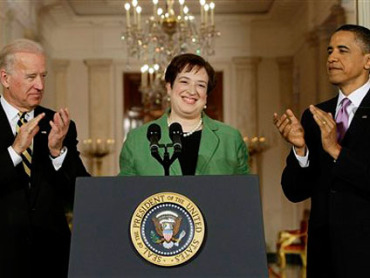Misunderstandings of Affirmative Action: Supreme Court Edition
 I'm poorly qualified to pronounce on Affirmative Action as a general topic. But I do see misunderstandings that overlap with one of my favorite topics: errors in perceiving probabilities.
Before you say BORING, let me try to convince you that this is at the heart of the AA debate.
I'm poorly qualified to pronounce on Affirmative Action as a general topic. But I do see misunderstandings that overlap with one of my favorite topics: errors in perceiving probabilities.
Before you say BORING, let me try to convince you that this is at the heart of the AA debate.
The #1 question about Elena Kagan is "did she get nominated because she's a woman?" There is no way to answer this for one unique case, but we can ask for women in general, do they benefit a lot from AA?
As usual there are two probabilities that are often confused with each other. The first is that IF there is a big promotion because of AA for women, THEN the beneficiary will be a woman. This probability is 100% by definition.
The second probability is that IF you are a woman, THEN you benefit a lot from AA. I leave it to the experts to figure out this exactly, but you don't have to be an expert to know this is a lot lower than 100%. If we are talking about AA primarily affecting promotions to a high position, then this is intrinsically rare for both men and women. It follows that this 2nd probability would be very low, because few women are affected by promotions to highly selective positions.
Yet because we often confuse reverse conditional probabilities (i.e. the two probabilities above), as discussed in many previous posts, we think a lot more women are benefiting from AA (which is perceived to be unfair by many) than really are. Conversely, very few men are really being affected by reverse discrimination (again because highly selective promotions are rare to begin with).
So bottom line of this post: I get really annoyed to see the accomplishments of my female professional friends and colleagues stigmatized because they are seen, most of the time incorrectly, as Affirmative Action babies.
PS One interesting aside relevant for today's previous post. If Kagan is confirmed, the Supreme Court will consist of 6 Catholics and 3 Jews, none of whom would have been considered to fit the core definition of "white" before the mid-19th century in America.
 From Aid to Equality
From Aid to Equality
